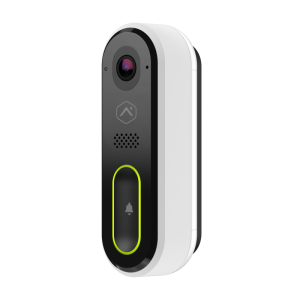New Exit Delay Feature For Alarm.com Recording Rules
Posted By Julia RossWe've all been there: you step out the door, and your phone instantly buzzes with camera notifications. If you're using Alarm.com's recording rules, you'll love this update! Now, you can set a delay of from 1 to 30 minutes before those recordings start, cutting down on nuisance notifications.
Alarm.com continues to enhance its user experience with a new recording rule setting that minimizes unnecessary notifications and maximizes video storage. By allowing users to delay recordings during exit, nuisance clips are reduced, freeing up valuable upload capacity within monthly video plan limits and ultimately saving users money.
This new delay feature is compatible with all Alarm.com cameras that support modern video analytics. Older, first-generation analytics cameras, while still functional on some accounts, do not support this feature.
Configuring the recording rule delay is...unique. We've outlined the steps below in an effort to provide clarity. You can apply this setting to both new and existing recording rules. Refer to the screenshots provided for a visual guide on enabling the delay within the rule settings.To navigate to this section via the customer website:
- Log into your Alarm.com account.
- Click Video.
- Click on Recording Rules (at the top, in the blue bar).
- Click +Add New Rule, or find the rule you want to edit in the list, then click the pencil icon.
- In the section titled "Recording Rule" fill in the appropriate information. In the section for "Except when.." select "Disarmed", "Armed Stay" or both.
- Select the Exit Delay Time from the dropdown.
- Be sure to Save before exiting.
Programming the Video Rules Exit Delay via the customer website:

To navigate to this section via the customer app:
- Open the Alarm.com app and log in.
- Tap Video at the bottom of the screen.
- Tap the gear icon at the top right.
- Tap Recording Rules.
- Tap Add at the upper right, or scroll through the list of recording rules, find the one you want to edit and tap the pencil icon.
- Tap Next in the upper right once the first screen is properly configured, then scroll down to the Recording Rule section.
- In the "Except when.." section, select "Disarmed", "Armed Stay", or both.
- From the dropdown, select the Exit Delay time.
- Be sure to click Save before exiting.
Programming the Video Rules Exit Delay via the Alarm.com app:


Actually, the setup itself is not the tricky part. It's understanding what will happen, and when, that's a little confusing. So, here's the logic. This information was provided by Alarm.com Core Technical Support:
- If you select "Except when Disarmed" and choose a delay from the dropdown, the recording rule will start after the delay time whenever the system is Armed Away or Stay.
- If you select "Except when Armed Stay" and choose a delay from the dropdown, the recording rule will begin after the delay time when the panel is Disarmed or Armed Away.
- If both "Except when Disarmed and Armed Stay" boxes are checked and a delay is selected, the recording rule will begin after the delay when the panel is Armed Away.
I'll confess, I haven't quite wrapped my head around this logic. I've found it's best if I don't overthink it! Hopefully, they'll tweak the wording and make it a little more clear somewhere down the road. Regardless, even with a slightly confusing setup, this is a fantastic addition, and I can't wait to try it out on my own system!

 Alarm.com Stream Video Recorders (SVR) offer customers the option of recording video 24/7. Without an SVR, Alarm.com limits the number of clip uploads available to each video customer per month. This allows Alarm.com to ramp up their cloud storage capabilities in line with the number of current and expected active video accounts. Without
Alarm.com Stream Video Recorders (SVR) offer customers the option of recording video 24/7. Without an SVR, Alarm.com limits the number of clip uploads available to each video customer per month. This allows Alarm.com to ramp up their cloud storage capabilities in line with the number of current and expected active video accounts. Without 



